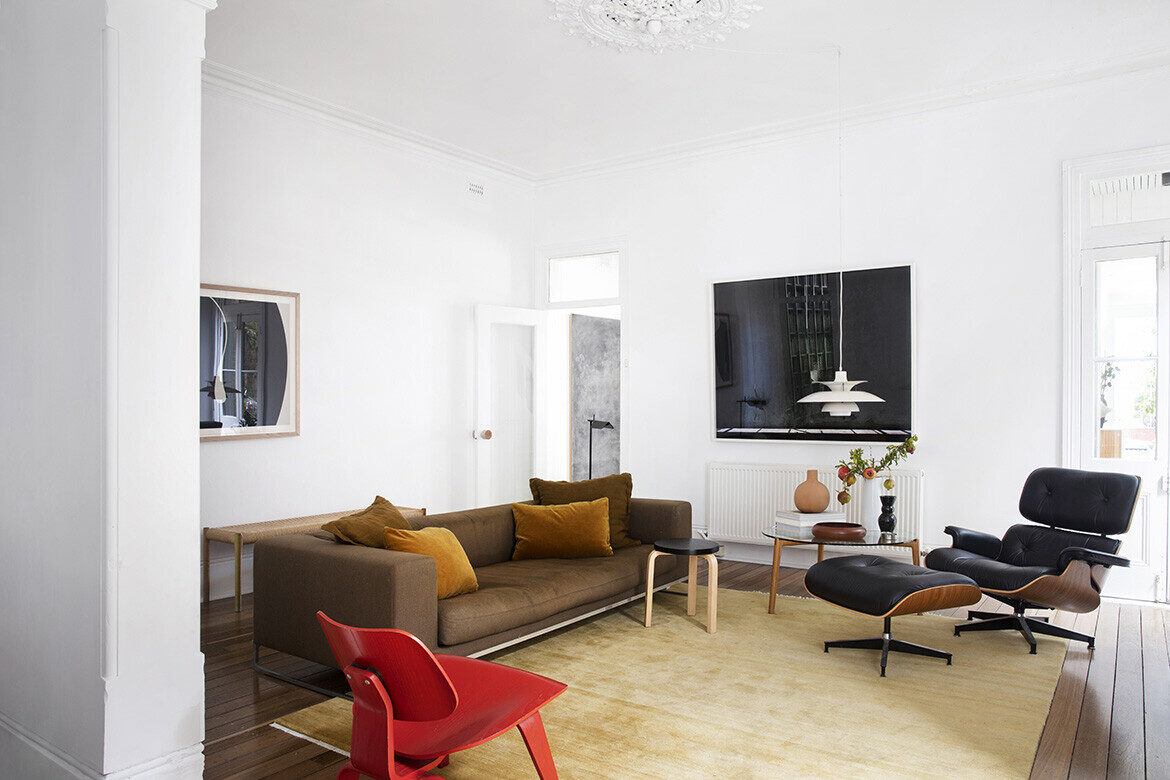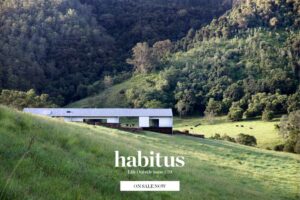Architecture power-couple Eva-Marie Prineas, principal at Studio Prineas, Peter Titmuss, BVN principal, were in possession of a perfect dining table – they just needed to find the right house for it.
When a free-standing Victorian Italianate terrace with the potential for windows on all sides, a north facing garden – and importantly, enough space for the AC dining table designed by Andrew Cortese – became available, it felt too good for the couple to pass up.

“When we moved to the house in Stanmore everyone went ‘Wow, your table fits perfectly!’ As though we hadn’t measured it and figured that out before we even considered the house,” laughs Prineas.
The house has been a constant project for about ten years and is finally complete.
“We were really drawn to the idea of having a garden at home, which was something that we really wanted for our boys,” says Prineas. The family had formerly lived in a gardenless Darlington warehouse (which the couple had also converted).

“Having lived in this open plan warehouse with two little boys and having their lives unravel everywhere, we were also quite excited about the idea of being in a home that had separate rooms,” says Prineas.
Prineas and Titmuss were drawn to the home because of its significant potential for light and a cross breeze, as well as the large drop at the rear of the plot. “There’s a whole level change that we were able to make the most of in terms of the planning,” says Prineas.

Influenced by living in an open plan warehouse for so long, “we didn’t need to add any more footprint necessarily, but we did need to open things up and change the plan a little bit,” says Prineas.
When they first bought the home, an archway separating the grand front rooms had been closed off with a brick wall. Over the years of renovations, they opened up this archway, opened up the back of the house where they added a deck and put the kitchen on the side of the dining room.
The couple also created a space downstairs with a rumpus room, an extra bathroom and laundry.

Where the kitchen was placed there were no floorboards. Because the rest of Elià house had original floorboards, Prineas and Titmuss instead opted for tiles which were also carried along the border between the deck and the dining room. Meanwhile, key Victorian Italianate features have been maintained, namely the tower at the front of the home.
It’s not just the dining table that takes pride of place as featured furniture in the home. Parentesi lights by Euroluce are suspended from the ceiling. A sofa from B&B Italia which isn’t produced anymore sits in the living room. Nearby, an inviting Eames chair provides a classic touch to the living space.

“Everyone loves [the Eames chair]. It’s an incredible chair to sit in and read in. It doesn’t get better than an Eames chair I think.” A smattering of Artek Stool 60s are scattered around the house and used for everything, says Prineas, as side tables, step ladders, extra seating around the table.
Without needing to rush, Elià house is a home developed with love and care over a decade.







Project details
Architecture and interiors – Studio Prineas
Photography – Chris Warnes
We think you might enjoy this interview with Eva-Marie Prineas where she shares her insights into kitchen design











